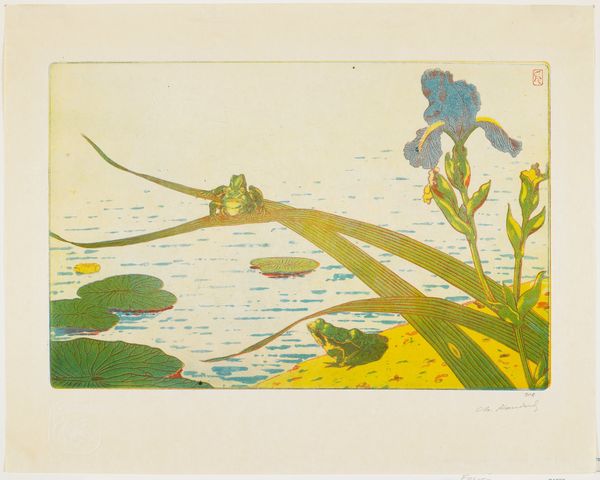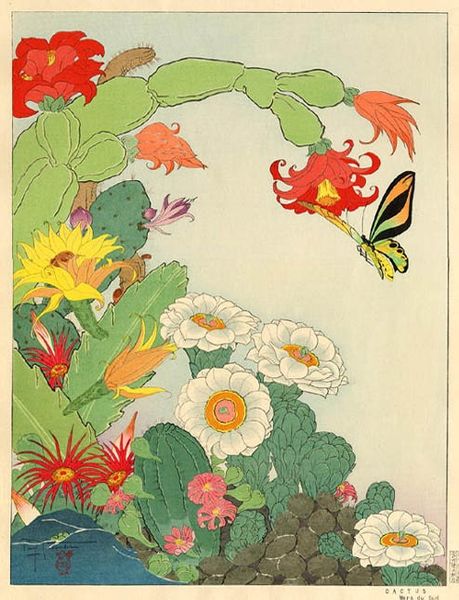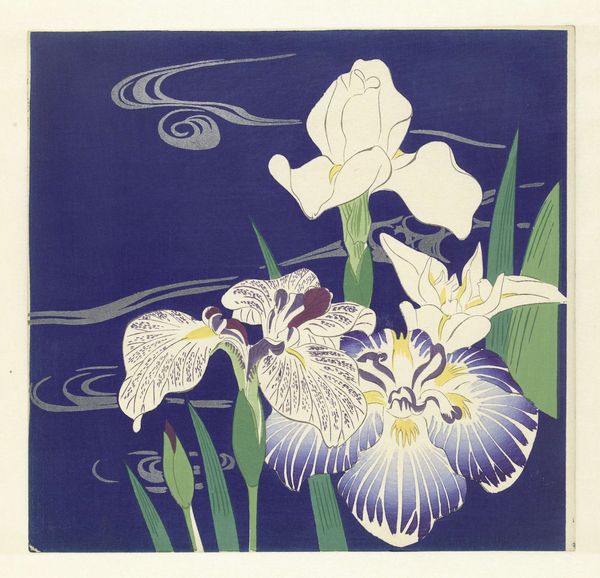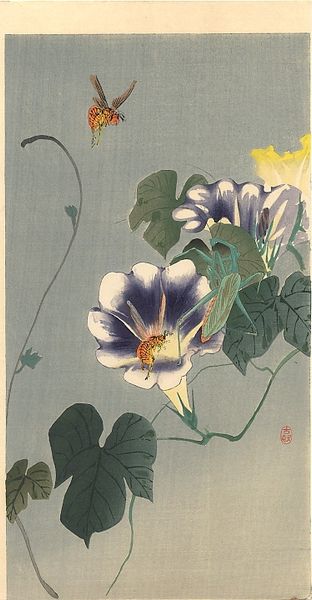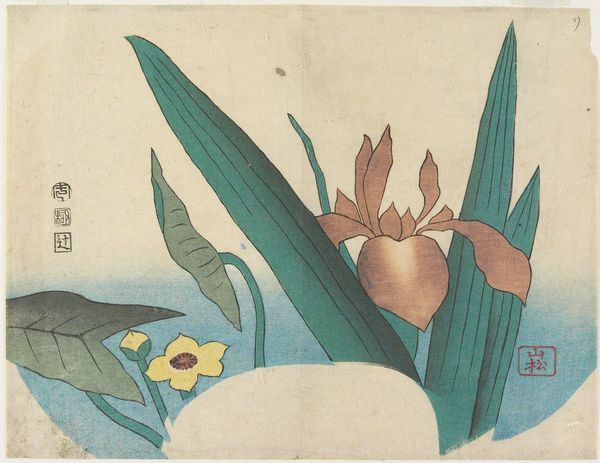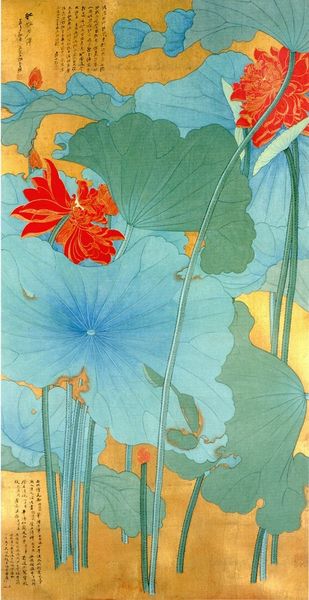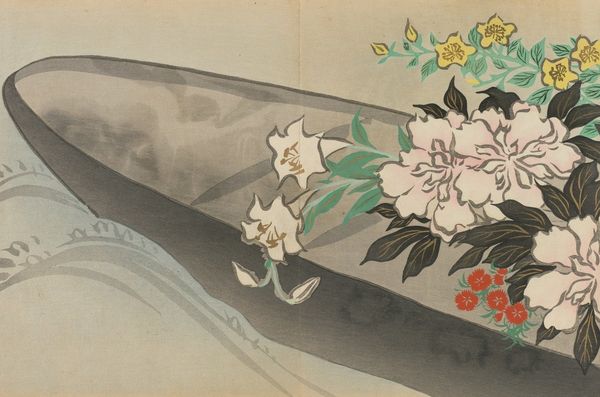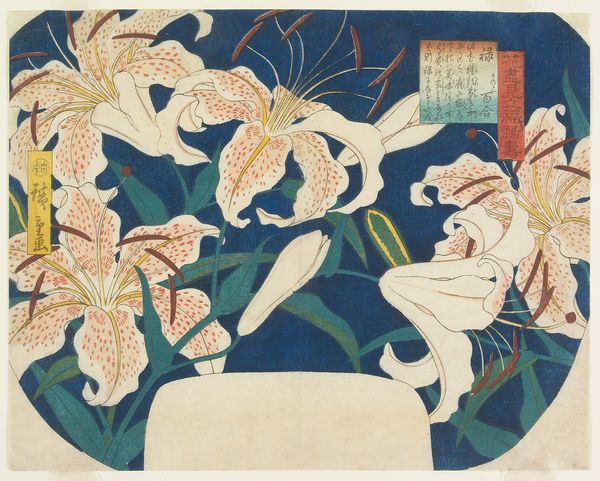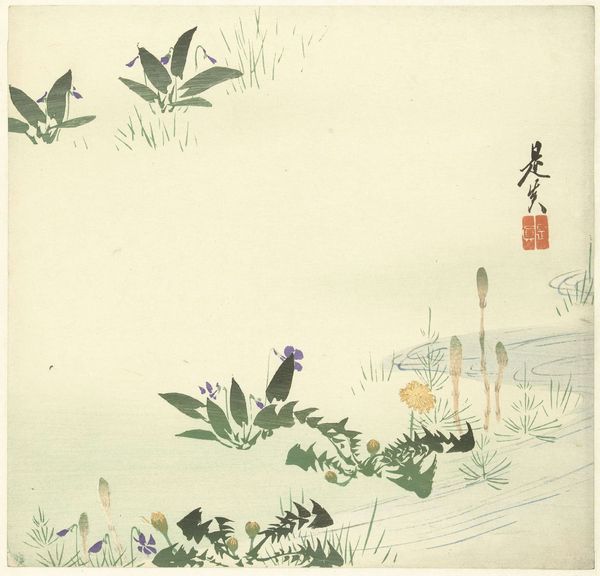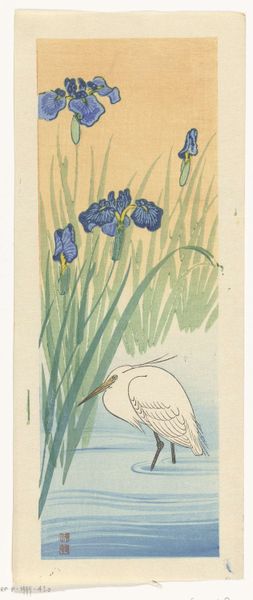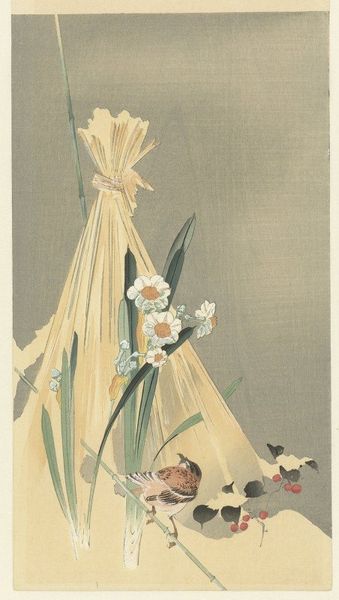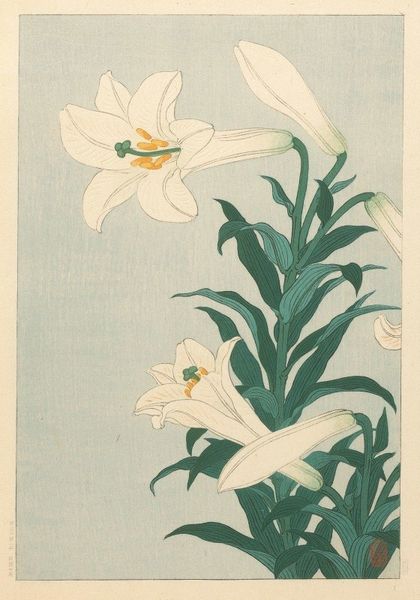
Copyright: Public domain Japan
Curator: This is "Fleurs Des Iles Lointaines. Mers De Sud," or "Flowers from Distant Islands, South Seas" by Paul Jacoulet, created in 1940. It's a woodblock print very much in the Ukiyo-e tradition, showcasing Jacoulet's signature style. Editor: The sheer vibrancy of the colors is striking. The vivid blue sea, that sliver of golden horizon... it feels immediately transportive, like a portal to an idealized paradise. Curator: Jacoulet was fascinated by the South Pacific, and this print exemplifies the Orientalist fascination with "exotic" cultures. His prints, while beautiful, also prompt questions about cultural representation and the gaze of the colonizer. How were these islands impacted by resource extraction, and what labor practices were employed in their depiction? Editor: It’s fascinating how Jacoulet blends the traditional Japanese technique of woodblock printing with his own vision of the South Seas. I'm drawn to the detail of each bloom, each petal meticulously carved. Curator: The woodblock process itself is essential. Each color requires a separate block, demanding careful labor and precision. Think about the skill involved in aligning those blocks to create such vibrant overlapping tones. What was the market for these prints during wartime? And what value systems did it sustain or challenge? Editor: Absolutely. There is an interesting tension at play here between the visual harmony and the broader questions of historical context and power dynamics it suggests. The image can make a visitor forget its position within an oppressive, historical view. Curator: These prints were not cheap! Owning one would be a deliberate purchase, and likely a luxury. The subject matter aligns with both colonial fantasies, and, perhaps more innocently, a search for peace and relaxation far from a world on fire. The way that beauty has the ability to distract from its place of origin is very important to consider here. Editor: Examining this artwork requires engaging with layered interpretations, acknowledging both its aesthetic beauty and its complex origins in the social and historical circumstances. Curator: Precisely. Hopefully our reflections offer a fuller, more nuanced appreciation of this piece. Editor: Agreed. A blend of critical thinking with material enjoyment – precisely what we want from these kinds of aesthetic encounters.
Comments
No comments
Be the first to comment and join the conversation on the ultimate creative platform.
